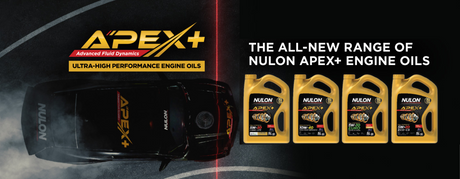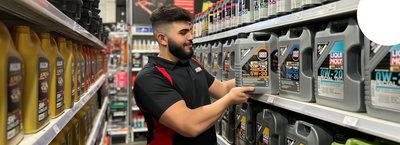Replacing worn-out suspension bush kits is one of the most important maintenance tasks you can perform to restore your vehicle’s comfort, handling, and safety. But one question often comes up after the job is done:
“Do I need a wheel alignment after replacing bush kits?”
The short and clear answer is yes in almost all cases, a wheel alignment is strongly recommended after replacing suspension bushings. Why? Because even slight changes to your suspension geometry can have a major impact on how your vehicle steers, brakes, and wears tyres.
In this in-depth guide, we’ll explain:
-
What bush kits are and why they’re replaced
-
How bushing replacement affects alignment
-
Why alignment matters for safety and performance
-
When you must get a wheel alignment
-
How to tell if your alignment is off
What Are Suspension Bush Kits?
Suspension bushings are flexible rubber or polyurethane mounts that connect various suspension components—like control arms, sway bars, trailing arms, and shock absorbers to the vehicle’s frame or subframe. Bushings help absorb road shocks and vibrations while allowing movement in a controlled way.
Over time, bushings crack, split, harden, or wear out due to:
-
Age and heat
-
Constant movement and flexing
-
Exposure to moisture, dirt, and road debris
-
Heavy loads or harsh driving conditions
Replacing these bushings commonly referred to as replacing a bush kit restores the suspension’s intended geometry, smoothness, and quietness. But once new bushings are installed, the geometry may not be exactly where it was before. That’s where a wheel alignment comes in.
What Is a Wheel Alignment?
A wheel alignment is the process of adjusting the angles of your wheels so that they are set to the manufacturer’s specifications. The main alignment angles include:
-
Camber: The inward or outward tilt of the wheel when viewed from the front.
-
Caster: The angle of the steering pivot when viewed from the side of the vehicle.
-
Toe: The direction the wheels point relative to each other (inward or outward).
Proper alignment ensures that all four wheels are pointing in the right direction, working together for balanced handling, even tyre wear, and efficient fuel use.
Why Bush Kit Replacement Affects Alignment
When you replace a bush kit particularly in control arms, trailing arms, or panhard rods you’re effectively altering the geometry of the suspension system. Even if the new bushings are the same size, the position of the arms or links can shift slightly due to:
-
The elasticity of the new rubber
-
Differences between worn and new bushings
-
Removal and refitting of suspension components
-
Compressed or misaligned parts being “reset” to their original position
These shifts, though minor, are enough to throw off wheel alignment angles.
For example:
-
A control arm bush change may alter caster and camber
-
A trailing arm bush replacement can affect rear toe
-
Replacing sway bar bushes might not directly affect alignment, but it can still influence cornering balance
That’s why aligning your wheels after suspension work is considered best practice regardless of whether you feel any immediate difference in the car's handling.
Key Reasons to Get an Alignment After Replacing Bush Kits
1. Prevent Uneven Tyre Wear
Misaligned wheels cause your tyres to wear unevenly and more rapidly. Replacing bushes without an alignment can lead to feathering, cupping, or wearing out the inner or outer edge of the tyre.
A new bush kit is an investment in your vehicle protect that investment with a fresh alignment to extend tyre life.
2. Restore Steering Accuracy and Safety
Even slight misalignments can cause your steering wheel to sit off-centre or your vehicle to pull to one side, especially during braking or acceleration. This can lead to poor vehicle control and added stress during emergency maneuvers.
Proper alignment ensures safe, predictable steering behavior, especially at highway speeds.
3. Improve Fuel Efficiency
When your wheels aren’t aligned, there’s increased rolling resistance your tyres scrub slightly against the road instead of rolling smoothly. This resistance forces your engine to work harder, using more fuel.
By aligning your wheels, you help your vehicle roll efficiently and burn less fuel over time.
4. Protect Other Suspension Components
Bad alignment doesn’t just wear out your tyres it also puts unnecessary stress on tie rods, ball joints, and shocks. Over time, this can lead to early failure of these components.
By getting your wheels aligned after installing new bushes, you protect other parts of the suspension system from premature wear.
When You Must Get a Wheel Alignment
There are a few suspension jobs where wheel alignment isn’t optional—it’s mandatory:
-
Replacing control arm bushes
-
Replacing trailing arm or panhard rod bushes
-
Installing lift kits or lowering springs
-
Replacing or adjusting camber bolts
-
Replacing struts or steering components
Even for bush kits in sway bars or minor components, an alignment is still a good precaution, especially if your vehicle has over 100,000 km or if you notice any signs of poor alignment.
Signs Your Vehicle Is Out of Alignment
If you’re unsure whether your vehicle needs an alignment, look out for these common signs:
-
Vehicle pulls to one side while driving
-
Steering wheel is off-centre when driving straight
-
Uneven tyre wear
-
Steering feels loose or vague
-
Noisy suspension or vibrations at speed
These symptoms often appear gradually, and drivers can get used to them over time without realizing there's a problem.
DIY Bush Replacement? Still Get a Professional Alignment
If you’ve replaced your bush kit yourself at home, it’s still a smart move to visit a trusted workshop for a professional alignment. While some vehicles allow for minor visual checks or DIY string alignments, nothing beats the accuracy of laser or computerised alignment machines, which can measure down to fractions of a millimetre.
Even if your steering feels fine, you won’t know for sure until it's measured professionally.
Final Thoughts: Don’t Skip the Alignment
Replacing your vehicle’s bush kits is a major step toward restoring a smooth, controlled, and responsive ride. But the job isn’t complete until your wheels are realigned. Whether you’ve replaced the bushes yourself or had a professional do it, getting a wheel alignment afterward is essential to:
-
Protect your tyres
-
Restore proper handling
-
Reduce fuel consumption
-
Ensure suspension parts wear evenly
Think of wheel alignment as the final step in any suspension job not an optional extra, but a required part of the process.
Need Bush Kits or Alignment Advice?
At Universal Auto Spares, we stock high-quality control arm bush kits, trailing arm bushes, and complete suspension solutions from trusted brands like Transgold engineered for Australian driving conditions.
✅ Wide fitment range for 4WDs, utes, and SUVs
✅ Affordable, OEM-quality parts
✅ Expert customer support
👉 Shop Bush Kits Now
📍 Need alignment advice or want to find a trusted local fitter? Contact our team, we’re here to help.



